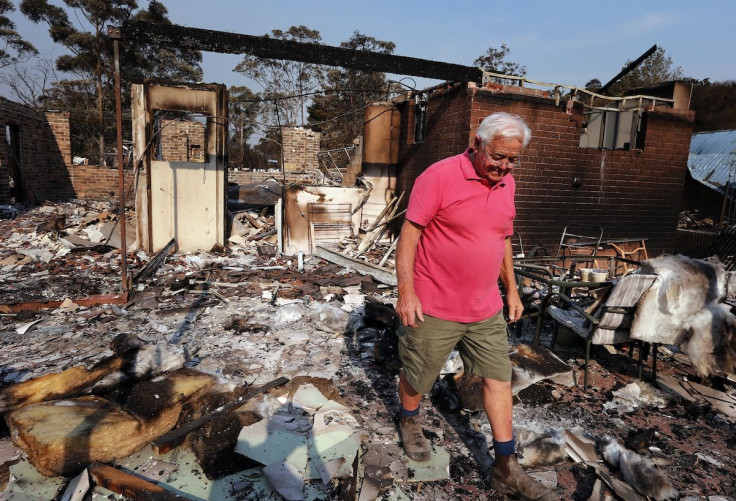Bush Fires Near Sydney Close Off Popular Blue Mountains On ‘Worst Day Yet’

SYDNEY -- Little more than an hour from central Sydney, the World Heritage-listed Blue Mountains are one of Australia’s most visited destinations. It’s a place of towering eucalyptus gums and deep valleys, of misty vistas and alluring bush walks. But this October, the region has made a name for itself for another reason entirely: bush fires.
Bush fires are common facets of the Australian landscape, but they don’t typically flare up this early in the spring or this big. Firefighters estimate there are now some 59 active fires across the state of New South Wales, as many as 18 of which are considered uncontained. Of those, it’s the 1,500km (930-mile) fire front in the Blue Mountains that remains the focal point of concern.
Earlier this week, forecasters warned that three fires in the region could join together to form a “megafire” with the potential to creep into Sydney’s western suburbs. Many hoped rain that fell overnight would weaken the bush fires burning in the Blue Mountains and southern highlands, but instead, firefighters said strengthening winds and an inability to conduct backburning operations had only made things worse.
“Anyone who does not have an important reason to be in the Blue Mountains tomorrow, do not be there,” NSW Rural Fire Service Commissioner Shane Fitzsimmons said Tuesday, telling residents to pack up the car and leave. “This will be as bad as it gets,” he noted, adding that there was a “real potential for more loss of homes and lives.”
The government closed all public, Catholic and independent schools in the Blue Mountains Wednesday, relocated people living in aged care facilities, and set up evacuation centers across the region.
Randall Walker, chairman of Blue Mountains Lithgow & Oberon Tourism, urged all tourism operators in the region to tell their visitors to stay away Wednesday due to fire conditions that are expected to be “severe to extreme.”
“The risks we face over the coming days should not be underestimated, (and) it is our paramount mission to ensure that no visitors to our region are injured due to bush fires,” Walker stated. “We express our deep thanks to all volunteers and full time professionals fighting the bush fires, protecting lives and property, and providing support services. Many tourism industry people are among the volunteers.”
The National Parks & Wildlife Service closed all parks and campgrounds in the Sydney metropolitan area earlier this week, and has now closed off all vehicle-accessible lookouts as well. The Blue Mountains City Council left visitor centers at Echo Point, home of the famous “Three Sisters” rock formation, and Glenbrook open to provide appropriate instructions to visitors already in the Blue Mountains.
By keeping visitors away, the communities in the Blue Mountains can focus instead on caring for their own. “Our focus is on protecting the lives and properties of this wonderful community,” Blue Mountains Mayor Mark Greenhill said Tuesday. “They breed us tough up here. If we stick together, support each other, we will get through this. We will!”
Forecasters had warned for days that high heat and high winds on Wednesday would make it the toughest day yet for firefighters struggling to control the blaze. Revised forecasts Wednesday morning showed temperatures soaring into the mid- to high 30s (85 to 95 Fahrenheit) with wind gusts of between 80 and 100 km/h (50 and 62mph).
RFS said that the bushfire outbreak, now in its seventh day, could continue for weeks to come, despite a massive effort by more than 3,000 firefighters from across the country and at least 90 aircraft.
The bush fires have not directly affected Australia’s biggest city, but smoke in the air has occasionally plunged Sydney into midday darkness. Hazy skies have led to some delays at Sydney Airport, too, while intermittently closing roads heading out of town from the western suburbs, though the Great Western Highway was open Wednesday morning. The greater Sydney area remains under a total fire ban until further notice.
© Copyright IBTimes 2024. All rights reserved.












